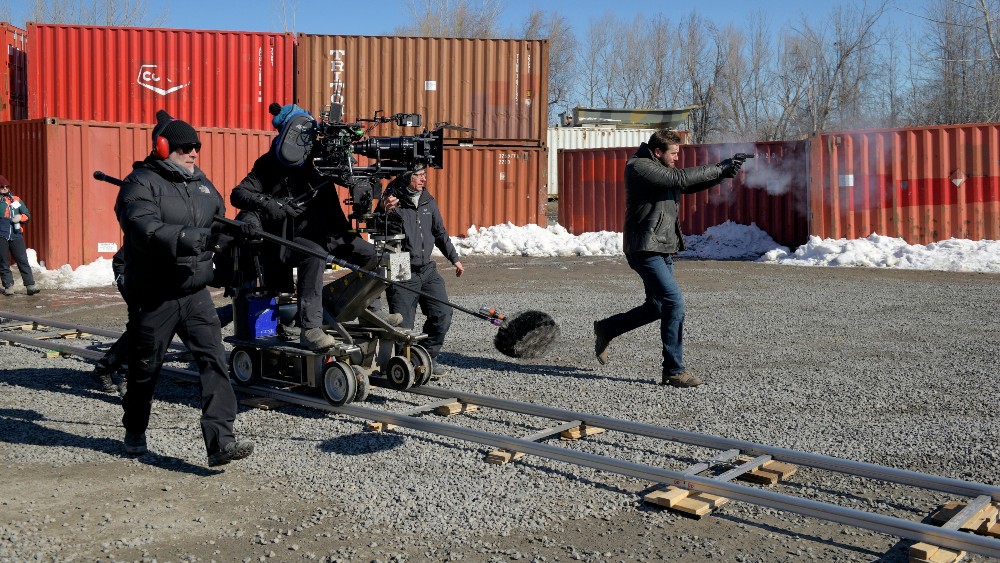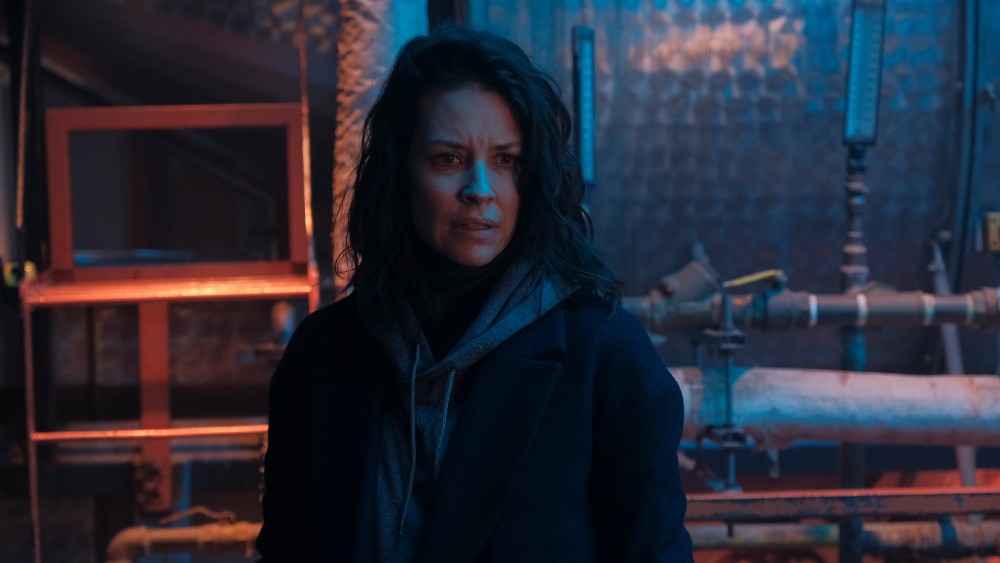
For Director Nicholas Jareckii, it’s been a long road getting the follow-up to his 2012 narrative feature debut, Arbitrage, starring Richard Gere, on its feet. The title of his latest film, Crisis, refers to the opioid addiction that’s destroyed so many lives and families in North America over the past few years.
Crisis stars Evangeline Lilly as Claire Reimann, a single mother recovering from her own addiction, whose son was killed due to his opioid addiction, but she’s also a woman who will not let her son’s murder go unanswered. Oscar-winner Gary Oldman plays scientist and college professor Dr. Tyrone Bower, who is finding his own ideals challenged by some of the actions of a pharmaceutical company where he consults. Armie Hammer plays Jake Kelly, an undercover DEA Agent, whose sister (Lily-Rose Depp) is struggling with her own addiction, but he needs to get to the bottom of how so many are dying on his watch.
These three seemingly simple but disparate stories are blended together through a masterful use of storytelling and filmmaking that makes Crisis one of the year’s more underrated dramas. The movie was financed through the studio system with plans for release overseas but allowing Jarecki to retain more rights for the film’s North American release.
Maybe the plans for the release of Crisis didn’t go exactly as planned, but Jarecki’s second narrative feature did manage to get a brief theatrical release back in February and did quite well On Demand, as well.
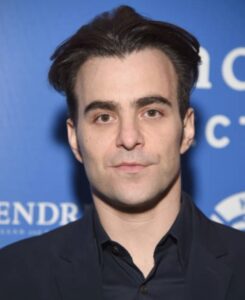
In an interview done over Zoom a few weeks back, Jarecki told Below the Line about the origins of Crisis and praised some of the creative collaborators he worked with on the film, including Production Designer Jean-Andre Carriere and DoP Nicolas Bolduc.
“15 years ago, I had a very bright young friend who got involved with pain pills recreationally,” he told us about the origins of the story. “We didn’t think too much of it, but then kind of very quickly, he went deep into it .He ended up switching over to heroin, as many people do, because these pain pills get very expensive, trying to buy them on the black market. Within a matter of months, he was dead. He was from a very good New York family, he was extremely bright, so fun and friendly, someone I loved very much, and at only 28 or 29, he was cut down. I just filed it away like one of the mysteries of life.”
“Five years ago, I was reading this wonderful series of articles in the Los Angeles Times where these investigative reporters had really uncovered documents from inside some of the pharmaceutical companies, showing that they may have had access to tons of research showing that these opioid-based painkillers were far more addictive than they let the public know,” he continued. “They had gone out of their way to market them, and push them ahead, really when more caution should have been applied, and that there was a great failure, in my opinion, on behalf of our regulators at the FDA, and other places to protect the public, which I further found out that 50% of the people who work at the FDA, go on to work at pharmaceutical companies. Put all this together and it seems like an injustice of some kind, so I started researching. I called those LA Times reporters, they hooked me up with this undercover cop that had run the LA sheriff’s Narcotics Prescription Task Force and taken down the real cartels on which this film is based.”
“Literally almost everything in the movie actually happened,” he emphasized. “That bust at the beginning with the kid in the snow, that was a true story — a kid was caught crossing the Canada Border. I thought there’d never really been anything done as a Canadian crime saga, and Montreal was the city of my imagination. I went there and saw how beautiful it was, but also how it was a port city with smuggling.”
“I had a family member who was murdered many, many years ago, and I remember the mother used to go sit outside the murderer’s house before he had been arrested. That image was in my mind, so I put Evangeline Lily’s character in that role. I met Gary Oldman around the time of Darkest Hour, and I gave him the script, and he instantly reacted. And he said, ‘You know, I’m no stranger to addiction.’ He’d been sober 24 years now. I think addiction touches everybody, and I guarantee someone close to you that had an addiction issue.”
An important part of the Crisis equation was Jarecki shooting the film in Montreal with a Canadian crew. “I did this as a co-production, so all the department heads were Canadian,” he said about putting together his Crisis crew. “I used Jean Carriere, because he had done Enter the Void, Gaspar Noe‘s movie, which I loved and had such incredible production design. He was very much a practical man — nice guy works with his wife.”
“We didn’t build anything. We built bizarre stuff like when she drives through the border to Canada that’s a fake tollbooth,” he added. “I think we had 57 or 59 locations in this movie, so we were just constantly moving around. Everything is pretty much practical, then my favorite location was at Northlight, the pharmaceutical company headquarters. I saw that on my first scout there. I went around with this wonderful scout Diane, and she took me to that building. You walk in and there’s that spire where you see Gary Oldman walking, and we ultimately put a drone there.”
“On the other side, I had Cinematographer world class Nicolas Bolduc. I discovered him because he had done Enemy for Denis Villeneuve with Jake Gyllenhaal. In the past, I’ve worked with Yorick Le Saux, who did Arbitrage. For this, not only did I want to use a Canadian, but I wanted someone who knew Montreal,” Jarecki elaborated. “I didn’t bring in a Toronto guy. Bolduc just shot Andrew Haigh‘s new television series. I mean, he really is world class, and he had done a variety of pictures. He’s Mr. Montreal, because they shoot so many great pictures there, all the studio pictures. We were shooting in January, February March, when it’s f*cking freezing, so we had the A-level crew: [Gaffer] Eames Gagnon, [Key Grip] David Dinel, [Focus Puller] Eric Bensoussan. These are the guys that do the X-men. That Montreal crew was fantastic, the working men and women, AD department, grip and electric, props. Wow.”
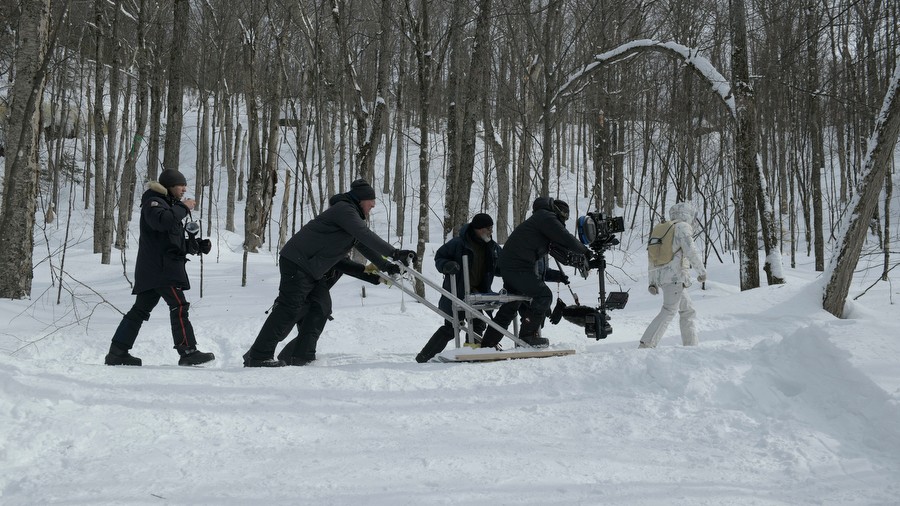
“We shot the whole thing in 35, as well, and they hadn’t done a 35 movie in a while up there,” the filmmaker added. “We used MELS as the lab, and so got very close with them. I’m quite friendly with the people at Kodak as well, Steve Bellamy, the President of the Motion Picture Group, so they gave us a lot of support. We shot over a million and a half feet or something. I’m the type of director who treats film like video.”
We eventually got around to speaking about the music for Crisis, a gorgeous electronic score by a relative newcomer. “I used a young Canadian electronic composer named Raphael Reed,” Jarecki said, adding, “Cliff Martinez is like one of the guardian angels of my life. He really came in and godfathered the score, because he did the beautiful score for Arbitrage. Unfortunately, he just wasn’t available on this picture — he was busy doing some other movies. He came in in this godfather role and really mentored Raphael, who was a wonderful student to Cliff. I mean, he’s his own man, his own artist, but then he had essentially the master coming in, and that was a wonderful experience. So he was able to return in that capacity.”
“My usual editor, Doug Crise, unfortunately, was not available, but again, he watched cuts and even got Stephen Mirrione to watch cuts,” Jarecki told us about how others from Arbitrage were called upon for advice. “Then Yorick, I would call him and I’d go, ‘Bolduc, he wants to shoot 2:35 anamorphic. What do you think?’ and he’d go, ‘Remember, we were talking about it for Arbitrage, but you didn’t have courage. Have the courage this time!’ So I would call some of the old guys for guidance, but I had a wonderful new team on this film.”
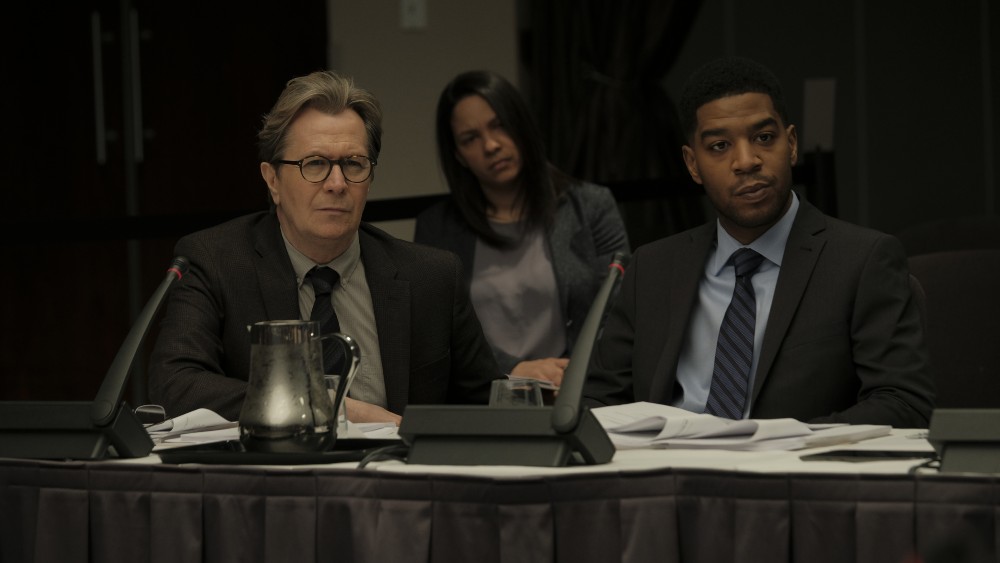
Jarecki got some worldly advice from a fellow filmmaker as well about how to deal with working with ever-changing crews for each film. “My friend Richard Kelly (Donnie Darko) is a very good director, and he once said to me, ‘The thing with a director’s career is you’re on a train, and you just keep that train moving. And then people get on and off for different reasons. They don’t want to be there or they can’t be there, but the train’s gonna keep going, so sometimes when people come on, they’ll stay on, sometimes they’ll get off.”
“I think that’s the reality of crews today, because everything is so disorganized and difficult from a production standpoint, not only because of COVID but just the general decentralization of filmmaking,” Jarecki embellished upon Kelly’s analogy. “The difficulty of what’s happened in the industry, how people’s livelihoods are being threatened, how uncertain the production is and how sort of heartless it’s all become with there being no real studio system anymore to have reliable employment. Everybody’s freelance, so it’s very hard to coordinate unless you’re Tarantino or Nolan, who can keep their crew on and waiting. God bless them that they can do that, but everybody else is kind of like ‘I gotta work with the pieces that are available to me now.'”
One of the comparisons Jarecki feels his film has gotten, not always fairly, is to Steven Soderbergh’s Oscar-winning Traffic, maybe because Crisis also deals with drugs and shifts perspectives between multiple characters.”It invites the comparison, although it wasn’t exactly a model only in the sense that it was a multi-plot story,” Jarecki stated. “I really think the generator of this type of cinema was Robert Altman, who directed Nashville. He pioneered the interlocking storylines. This is something I’ve tried to do with Bret Easton Ellis. We wrote a script called The Informers that was kind of ill-fated. I didn’t direct it in the end. I like that interlocking narrative thing, and frankly, as a director, it afforded me an opportunity to expand my range as a director and to get into more locations, more scenarios, more vistas. I wanted to do something distinct from Arbitrage. My last film had been very successful but was focused on the rich and this gilded world. Here I thought, ‘Let me take some of the same techniques I think I’m good at doing, putting what my mother calls ‘putting the slick on it.’ Let me take some of the elegant filmmaking tools, but let’s apply them to something kind of bleak and frightening. Maybe through that sugar-coating we can get the audience, before they know it, they’re into this kind of madness. That appealed to me as well.”
Crisis is now available on DVD and Blu-Ray as well as On Demand. All photos courtesy of Quiver Entertainment and Nicholas Jareckie.

